Ultimate Everest Adventure: Gokyo Lakes & Base Camp Trek – 17 Days in the Roof of the World
Let me tell you why this trek stands apart from every other Everest adventure out there. While most groups are stuck in single-file lines heading straight to Base Camp, you'll be exploring the Khumbu region's best-kept secrets - those mind-blowing turquoise Gokyo Lakes that look photoshopped (but aren't), crossing the kind of high mountain pass (Cho La at 5,420m) that gives you bragging rights for life, and watching dawn break over Everest from Kala Patthar's unbeatable vantage point.
This 17-day journey is what happens when you refuse to settle for the standard Everest itinerary. We've woven together all the magic of the Himalayas - heart-pumping climbs, serene glacial lakes, and authentic Sherpa culture - into one perfectly paced adventure. You'll spend nights in family-run teahouses where the warmth makes up for the thin air, traverse ancient trails worn smooth by generations of yak caravans, and experience those "pinch me" moments that only come when you've earned them with your own two feet.
Let me paint you a picture of what these 17 days really feel like under your boots. Remember that childhood excitement of your first big adventure? That's exactly how you'll feel crossing the Hillary Bridge - heart pounding as the suspension sways, prayer flags snapping in the wind, with the knowledge that Everest is waiting up ahead. The trail surprises you every day - one moment you're catching your breath in a sunlit pine forest, the next you're staring at the Ngozumpa Glacier's frozen waves that look like a stormy sea hit the pause button.
That morning at Gokyo Lakes? Pure magic. You'll wake before dawn, pull on every layer you packed, and hike up to Gokyo Ri in the dark. Then - just as your legs start protesting - the sun hits Everest's summit pyramid and suddenly you're crying in your buff (don't worry, we all do). The lakes below transform from slate gray to impossible shades of turquoise that no photo will ever do justice.
Cho La Pass is where you earn your stripes. Crampons crunching on blue ice, hands steadying on fixed ropes, that exhilarating moment when you crest the top and realize - you just walked across a piece of the Himalayas few travelers experience. By the time you reach Base Camp, it's not just a checkbox - it's the triumphant finale to days of building anticipation, with the Khumbu Icefall's towering seracs reminding you how small and how capable we humans can be.
Nature's Grand Theater: The Living Wonders of the Everest & Gokyo Trek
Let me tell you about the secret life of these mountains - the part you won't see in any Instagram post. As you leave Lukla's airstrip, the trail wraps you in a green embrace of pine forests where sunlight filters through like liquid gold. But here's what surprised me most - how the landscape changes personality every thousand feet like a moody artist.
By the time you reach Namche Bazaar, the air carries the crisp scent of juniper, and if you're lucky like I was last April, you'll catch the rhododendrons putting on their annual fireworks show - blossoms so red they make your eyes ache with beauty. That's when I saw my first Himalayan monal, its feathers shimmering like oil on water as it darted between the trees.
The Gokyo Valley is where Earth shows off her surreal side. Those famous turquoise lakes? They change color by the hour - one minute slate gray, the next Caribbean blue, depending on how the light hits the glacial flour suspended in the water. I'll never forget crouching by the third lake at dawn, watching bubbles rise through ice crystals like nature's own champagne.
Higher up near Cho La Pass, the rules of life get rewritten. Plants grow in perfect spheres to survive the wind, and blue sheep (bharal) become masters of camouflage - I once stared at a "rock" for ten minutes before it blinked. The real showstoppers are the lammergeiers, those dinosaur-sized vultures that ride thermals with wings wide enough to shade a yak.
Even at Everest Base Camp, where you'd expect a wasteland, orange lichens paint abstract art on every boulder. My most magical moment? Spotting fresh snow leopard tracks near Lobuche - the guide hushed us all as we imagined the ghost cat watching from some unseen perch.
The Everest & Gokyo Adventure: A Himalayan Journey You'll Feel in Your Bones
Let me tell you about the trail that ruined all other mountain trips for me - where every bend reveals another "I can't believe this is real" moment. This isn't just a trek; it's a 17-day love letter to the Himalayas, written with your footsteps from Lukla's heart-stopping airstrip to Everest's icy doorstep and back.
From the Valley Floor to the Roof of the World
That first glimpse of your plane at Kathmandu airport - tiny against the Himalayas you're about to walk through - is when it hits you: this is really happening. The flight to Lukla isn't just transportation; it's your first white-knuckle adventure, watching pilots navigate mountain corridors to land on what's essentially a downhill runway.
The real magic begins when you hit the trail to Phakding, following the Dudh Koshi River past waterfalls that look like they're pouring straight from the sky. You'll share the path with dzopkyo (yak-cow hybrids) carrying expedition supplies, their bells creating a mountain soundtrack. The climb to Namche Bazaar hits different - literally. At 3,440m, this Sherpa metropolis clings to the mountainside like a miracle, where you'll catch your first proper view of Everest from the Everest View Hotel during acclimatization.
Where the Air Gets Thin and the Views Get Bigger
Past Namche, the world changes. The trail to Tengboche takes you through forests where rhododendrons bloom like fireworks in season, leading to the monastery where monks chant beneath Ama Dablam's perfect peak. Dingboche's stone-walled fields look like they've been there since the mountains rose, with Island Peak's sharp silhouette watching over your acclimatization hike.
Then comes the push to Lobuche, where memorials to lost climbers remind you this is serious mountain territory. Gorak Shep feels like the edge of the world - your launchpad for both Everest Base Camp (where you'll stand amidst expedition tents beneath the Khumbu Icefall's frozen chaos) and Kala Patthar's sunrise spectacle (where Everest turns from stone to gold in minutes).
The Road Less Traveled: Where Real Adventure Begins
Here's where your trip separates from the standard Everest experience. Cho La Pass isn't just a crossing; it's a full-body experience - crampons on ice, hands gripping fixed ropes, breath coming hard at 5,420m. Your reward? Gokyo's unreal blue lakes, each one a different shade depending on the light. Climbing Gokyo Ri at dawn reveals a panorama so vast your brain struggles to process it - six 8,000m giants lined up like sentinels.
The descent through Dole's forests feels like walking back through seasons - from winter's grip to autumn's golden hues to spring's blossoms near Namche. That final stretch to Lukla is bittersweet; your legs feel stronger but your heart isn't ready to leave.
Why This Route Stands Out:
- Combines classic Everest views with Gokyo's hidden gems
- Smart acclimatization at key points keeps you healthy
- Crosses thrilling Cho La Pass most trekkers miss
- Offers both cultural immersion and raw mountain beauty
The Everest & Gokyo Trek: 12 Moments That Will Steal Your Breath
Let’s cut to the chase – most Everest treks show you one side of the Himalayas. This 17-day adventure? It’s the full uncut version. Here are the heart-pounding, camera-filling, story-worthy highlights that’ll make your friends back home question their life choices:
- That First Everest View from Namche Bazaar (3,440m) – When the clouds part at Everest View Hotel and there it is: the world’s tallest mountain staring back at you over steaming rhododendron tea.
- Tengboche Monastery at Dawn (3,860m) – Morning prayers echo as the sun hits Ama Dablam’s perfect ridges, making monks’ chants and mountain views collide in one spiritual punch.
- Dingboche’s Acclimatization Hike (4,410m) – Where your lungs protest but your eyes feast on Island Peak’s icy fangs and Imja Valley’s surreal landscape.
- The Khumbu Glacier Walk to Lobuche (4,940m) – Stepping over frozen waves of ancient ice that groan like a sleeping giant beneath your boots.
- Everest Base Camp Celebration (5,364m) – High-fiving strangers amid expedition tents with the Khumbu Icefall’s jagged towers looming overhead – no photo does this moment justice.
- Kala Patthar’s Sunrise (5,643m) – Summoning your last energy for the pre-dawn climb where Everest transforms from stone to molten gold in minutes.
- Cho La Pass Crossing (5,420m) – Crampons crunching on blue ice, hands gripping ropes, realizing you’re literally walking across a Himalayan spine few travelers experience.
- First Sight of Gokyo Lakes (4,700m) – When those impossible turquoise pools appear like someone dropped Caribbean water into the Himalayas.
- Gokyo Ri Summit at Dawn (5,357m) – Where six 8,000m giants line up for your viewing pleasure while the lakes below mirror the morning sky.
- Fifth Lake Exploration (4,950m) – Hiking beyond the crowds to where the Ngozumpa Glacier calves icebergs into silent waters at the valley’s end.
- The Descent Through Rhododendron Forests – Breathing deep as oxygen returns, walking through tunnels of pink blooms near Dole with snow peaks still peeking through the branches.
- Final Lukla Celebration – That first cold Everest beer tasting like victory as you trade trail stories with fellow trekkers who just became lifelong friends.
The Everest & Gokyo Trek Through the Seasons: A Himalayan Calendar That'll Help You Pick Your Perfect Adventure
Let's talk real weather - not what the brochures say, but what you'll actually face on the trail during different months. I've stood shivering in winter snowstorms at Gorak Shep and sweated through unexpected monsoon heat in Namche - here's the unfiltered truth about when to tackle this legendary route.
Spring (March-May): When the Mountains Throw a Color Party
Remember that feeling when you were a kid and saw the first flowers push through snow? That's spring in the Khumbu. By April, entire hillsides explode with rhododendrons so vibrant they look Photoshopped. Days hover around 15°C - perfect for hiking in just a base layer. But here's what nobody tells you: those famous Everest views? They're actually clearer in spring than autumn because there's less dust in the air. The trade-off? You'll share the trail with more trekkers (though nothing like autumn crowds). Pro tip: Come early March to catch the last of winter's solitude with spring's milder weather.
Autumn (Sept-Nov): The Classic Himalayan Postcard
This is when every photographer, Instagrammer, and bucket-lister descends on the trail - for good reason. The monsoon has scrubbed the skies clean, leaving views so sharp you can count the crevasses on the Khumbu Icefall from Kala Patthar. But here's the reality check: "Perfect weather" means everyone else had the same idea. Book teahouses by July unless you fancy sleeping in dining rooms. The secret weapon? Push into November when crowds thin but you'll need serious cold gear - I once woke up to -15°C at Dingboche.
Winter (Dec-Feb): For Those Who Earn Their Views
Picture this: Your boot prints are the only ones leading to Everest Base Camp. Frozen waterfalls glitter like chandeliers. The cold? Oh yeah, it'll bite - nights drop to -20°C at high camps. But when you're the only soul watching dawn paint Everest gold from Kala Patthar, you'll understand why winter regulars call this "the real Himalaya." Just know Cho La Pass often becomes impassable, so have a Plan B.
Monsoon (June-Aug): The Trail Less Traveled
Yes, it rains. A lot. But here's what the trekker's miss: The valleys turn so green they glow, waterfalls become thunderous spectacles, and you'll have entire lodges to yourself. The trick? Focus on the rain-shadowed Gokyo region where precipitation is half that of the EBC route. Just embrace the mud, pack quick-dry everything, and relish having Sherpa hospitality all to yourself.
The Nuts & Bolts:
- Best wildlife viewing: Spring (birds mating) & autumn (migrating species)
- Easiest trail conditions: October (post-monsoon cleanup, pre-winter freeze)
- Most dramatic photos: Winter snowscapes or spring blooms
- Biggest bargains: June & December shoulder seasons
A Tip From My Guidebook:
That "perfect weather window" in late October? Everyone knows about it. But sneak in during the first week of December and you'll catch cleared autumn skies with winter's solitude - just bring your warmest puffer jacket.
Eating and Sleeping in the Everest & Gokyo Region: A Real-World Guide
Let’s talk about two things that’ll make or break your trek: where you sleep and what you eat. I’ve choked down enough stale cookies and slept in enough creaky teahouse beds to tell you exactly what to expect—from basic bunk rooms to surprise luxuries in the middle of nowhere.
Teahouses: Your Himalayan Homes Away From Home
1. Standard Teahouses (The Classic Experience)
These family-run lodges are the backbone of the Everest trek. Picture this: wooden walls covered in trekker graffiti, a yak-dung stove pumping out heat, and a dining room buzzing with stories from the trail.
- Rooms: Twin beds with thin mattresses (bring a sleeping bag liner). Walls are paper-thin—hope your neighbor doesn’t snore.
- Bathrooms: Usually shared, with squat toilets at higher altitudes (Namche has flush toilets; above Dingboche, it’s a hole in the ground).
- Surprise Perk: Some teahouses in Tengboche and Dingboche now have solar showers (but hot water isn’t guaranteed).
- Best For: Budget trekkers who want the authentic experience.
2. Upgraded Lodges (For Those Who Want a Little More Comfort)
Places like Everest Summit Lodge in Phakding or Yeti Mountain Home in Namche offer real beds, private bathrooms, and even heated blankets.
- Rooms: Actual mattresses! Sometimes even en suite bathrooms.
- Dining: Menus include pasta, pizza, and decent coffee (a luxury at 4,000m).
- Pro Tip: Book these for acclimatization nights—nothing beats a hot shower after a long hike.
3. Luxury Options (Yes, They Exist!)
Believe it or not, you can trek to Everest in style:
- Hotel Everest View (3,880m): Wake up to panoramic Everest views from your window.
- Six Senses Lodges: Private villas with heated floors and spa treatments (yes, really).
- Catch: These are only in lower areas (Namche, Phakding)—once you’re past Tengboche, it’s back to basics.
Food on the Trail: From Dal Bhat to Surprising Treats
Breakfast: Fuel for the Climb
- Local Pick: Tibetan bread (fried dough) with honey or jam.
- Western Option: Oatmeal or eggs (order them "Sherpa style" with chilies and onions).
- Must-Try: Buckwheat pancakes in Dingboche—gluten-free and packed with energy.
Lunch/Dinner: The Real Deal
- Dal Bhat Power 24 Hour: The trekker’s staple—unlimited rice, lentil soup, and veggie curry. Pro tip: The garlic soup at Lobuche helps with altitude.
- Momo Madness: These dumplings are everywhere. The cheese ones in Namche are legendary.
- Unexpected Finds: Some teahouses now serve yak steak (chewy but tasty) and even apple pie (made with local fruit).
Snacks & Drinks
- Energy Boosters: Snickers bars and Pringles are sold at every stop (for triple the normal price).
- Hot Drinks: Ginger lemon honey tea is the ultimate trail remedy. Avoid coffee at high altitudes—it dehydrates you.
Hygiene & Real Talk
Food Safety
- Golden Rule: Stick to boiled, baked, or fried foods. Avoid meat at higher altitudes (it’s carried up without refrigeration).
- Water: Always purified. Most teahouses sell boiled water (bring a reusable bottle).
Bathroom Situations
- Lower Altitudes (Namche, Phakding): Western toilets, sometimes with TP.
- Higher Up (Gorak Shep, Gokyo): Squat toilets, and you’ll need your own toilet paper.
- Showers: Hot water depends on solar heating. In winter, it’s often bucket baths (if at all).
Money-Saving Tips
- Share Rooms: Teahouses charge per room, not per person.
- Eat Local: Dal bhat is cheaper (and unlimited) compared to pizza.
- Bring Snacks: Trail mix from Kathmandu is cheaper than buying en route.
Everest & Gokyo Trek Permits: The Straightforward Guide
Let’s cut through the confusion – yes, you need permits for this trek, but no, it’s not as complicated as some blogs make it sound. Having helped dozens of trekkers navigate this process, here’s everything you need to know in plain English. The 3 Must-Have Permits for Your Trek:
Sagarmatha National Park Entry Permit
- Cost: NPR 3,000 (≈ $25)
Where to Get It:
- Kathmandu: Nepal Tourism Board office (bring passport copies)
- Monjo checkpoint (on the trail, but get it in Kathmandu to avoid delays)
- Why It Matters: Covers your access to Everest region trails and conservation areas
Khumbu Pasang Lhamu Rural Municipality Permit
- Cost: NPR 2,000 (≈ $17)
Where to Get It:
- Lukla or Monjo checkpoints (cash only)
- New Rule: Replaces the old TIMS card requirement specifically for Everest region
Gaurishankar Conservation Area Permit (For Gokyo Route)
- Cost: NPR 3,000 (≈ $25)
- Where to Get It: Same as Sagarmatha permit offices
- Key Detail: Only needed if crossing Cho La Pass into Gokyo Valley
The Reality of Getting Permits
Option 1: Do It Yourself
- Time Needed: Half a morning in Kathmandu
What to Bring:
- 4 passport photos
- Copy of passport main page
- Cash (Nepali rupees)
(Pro Tip: The Nepal Tourism Board office opens at 10AM – go early to beat the tour group crowds)
Option 2: Let Your Agency Handle It
- Most reputable companies include permit processing in their package
- They’ll need clear scans of your passport 2+ weeks before arrival
Special Cases & Regulations
- Guide Requirement
- While not technically mandatory, solo trekking is strongly discouraged
- Many checkpoints will question unaccompanied foreigners
Checkpoints to Expect
- Monjo (Sagarmatha entry)
- Namche (may check permits)
- Dhole (Gokyo route verification)
- Common Mistakes to Avoid
🚫 Assuming You Can Pay by Card
- All permit fees are cash-only (Nepali rupees) ATMs in Lukla often run out – get cash in Kathmandu
🚫 Not Carrying Multiple Copies
- Keep 2 sets: one for checkpoints, one as backup. Phone photos won’t suffice
🚫 Last-Minute Applications
- During peak seasons (Oct-Nov), permit offices get overwhelmed
Why This System Exists
After trekking both with and without proper docs (I learned the hard way), I appreciate how permits:
- Fund trail maintenance and rescue services
- Help manage overcrowding
- Support local communities through fees
(Need Current Info? The Nepal Tourism Board website has updated forms, or DM Us for our recommended hassle-free permit service in Thamel.)
Fitness & Difficulty: What It Really Takes to Conquer Everest & Gokyo
Let’s be brutally honest—this isn’t a casual hike. Over 17 days, you’ll climb nearly 8,000 vertical meters (that’s like summiting Kilimanjaro twice), with some stretches like the Cho La Pass (5,420m) requiring crampons and nerves of steel. Most days involve 5-7 hours of trekking across rocky moraines, steep switchbacks, and high-altitude passes where the air feels frustratingly thin. The good news? With smart training (think stair-climbing with a weighted pack 3x/week plus weekend long hikes), even first-time trekkers succeed. Key preparation focuses on endurance over speed—the winner here isn’t the fastest, but the one whose legs still work at Gorak Shep. Altitude is the wildcard; even fit marathoners can get hit with headaches, which is why the itinerary builds in crucial acclimatization days at Namche and Dingboche.
(If you can hike 15km with elevation gain while carrying a daypack, and commit to 2+ months of targeted prep, you’ve got this.)
Teahouses to Trekkers’ Sanctuaries: Food & Lodging Reality Check
Forget fancy hotels—this is teahouse trekking at its most authentic. Expect basic twin-share rooms with plywood walls (earplugs are gold) and communal dining halls buzzing with trail stories. Meals range from carb-loaded saviors (dal bhat, Tibetan bread) to surprising luxuries (fresh apple pie in Namche). Higher up, menus shrink but staples like garlic soup (altitude helper) and instant noodles prevail. Hygiene standards surprise many—most lodges now have Western toilets (though squat versions dominate above Dingboche), and solar showers exist if you time it right.
Pro tips: Pack snacks for energy slumps, a sleeping bag liner for questionable blankets, and wet wipes for days when showers are mythical. While luxury options like Yeti Mountain Home exist in lower villages, the real magic happens in those creaky teahouses where yak-dung stoves and Sherpa hospitality warm you better than any five-star service.
Pressed for time but eager to see Everest’s grandeur? Opt for the Everest & Gokyo Lake Helicopter Tour , offering stunning aerial views and glacier landings—all in one luxurious day.
🧭 Alternative Tours & Packages
- Gokyo Lakes Trek with Gokyo Ri Summit
Explore the stunning turquoise Gokyo Lakes and conquer the panoramic summit of Gokyo Ri for spectacular views of Everest and surrounding peaks. This trek offers a mix of serene lakeside trekking and exhilarating mountain vistas.
- Gokyo Cho La Pass Trek
Challenge yourself with the thrilling Cho La Pass crossing, connecting the Everest and Gokyo valleys. This adventurous route rewards trekkers with diverse landscapes, glacial views, and a sense of remote wilderness.
- Luxury Everest & Gokyo Helicopter Trek - 5-Star Mountain Expedition
Experience the grandeur of Everest and Gokyo in style. This premium package combines luxury accommodations with scenic helicopter flights, offering comfort and breathtaking aerial perspectives of the Himalayas.
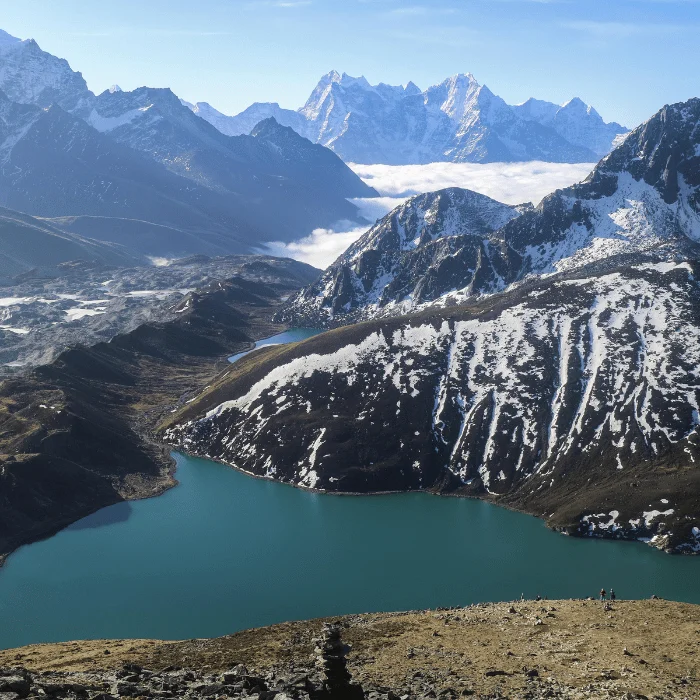
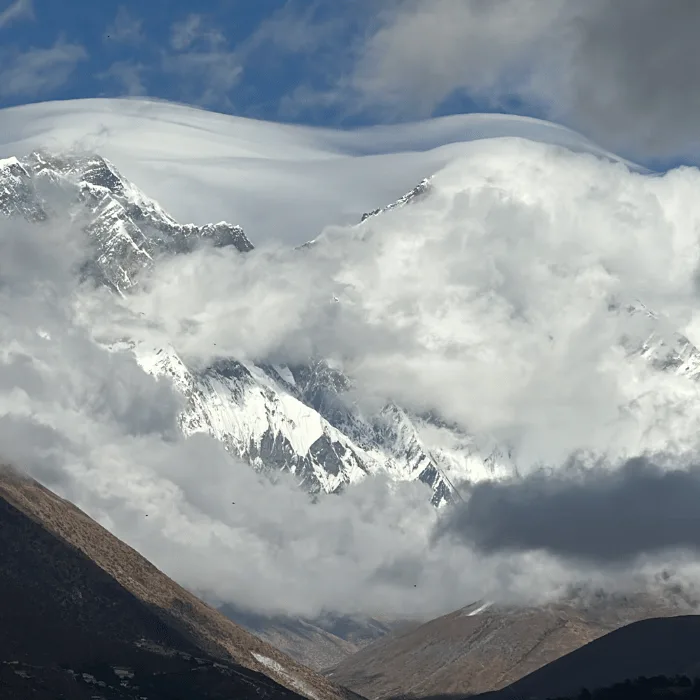
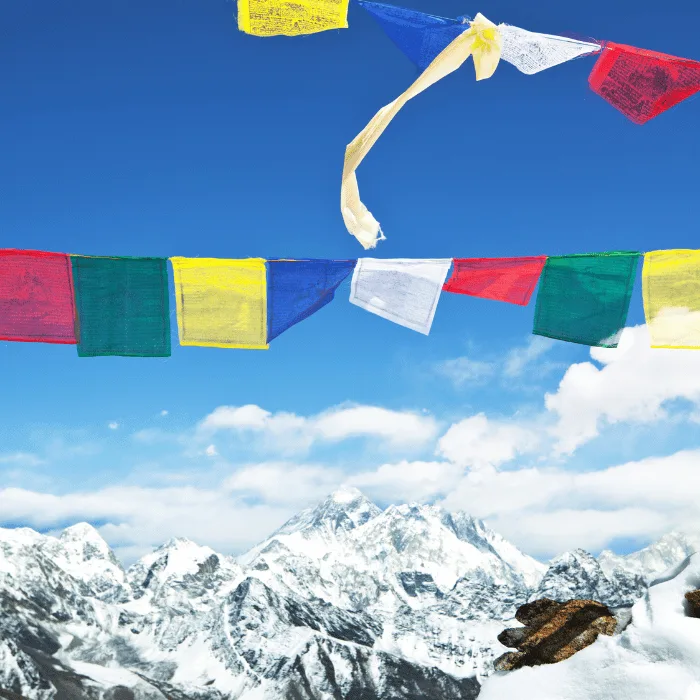

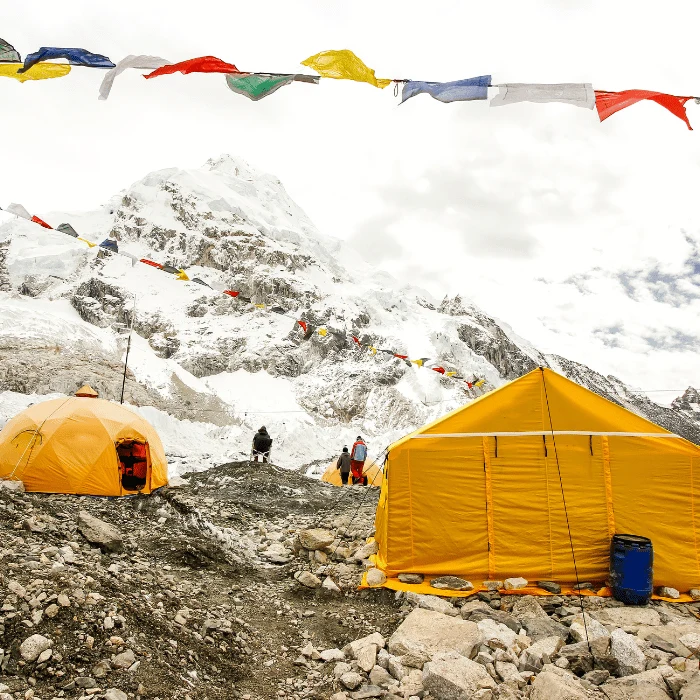


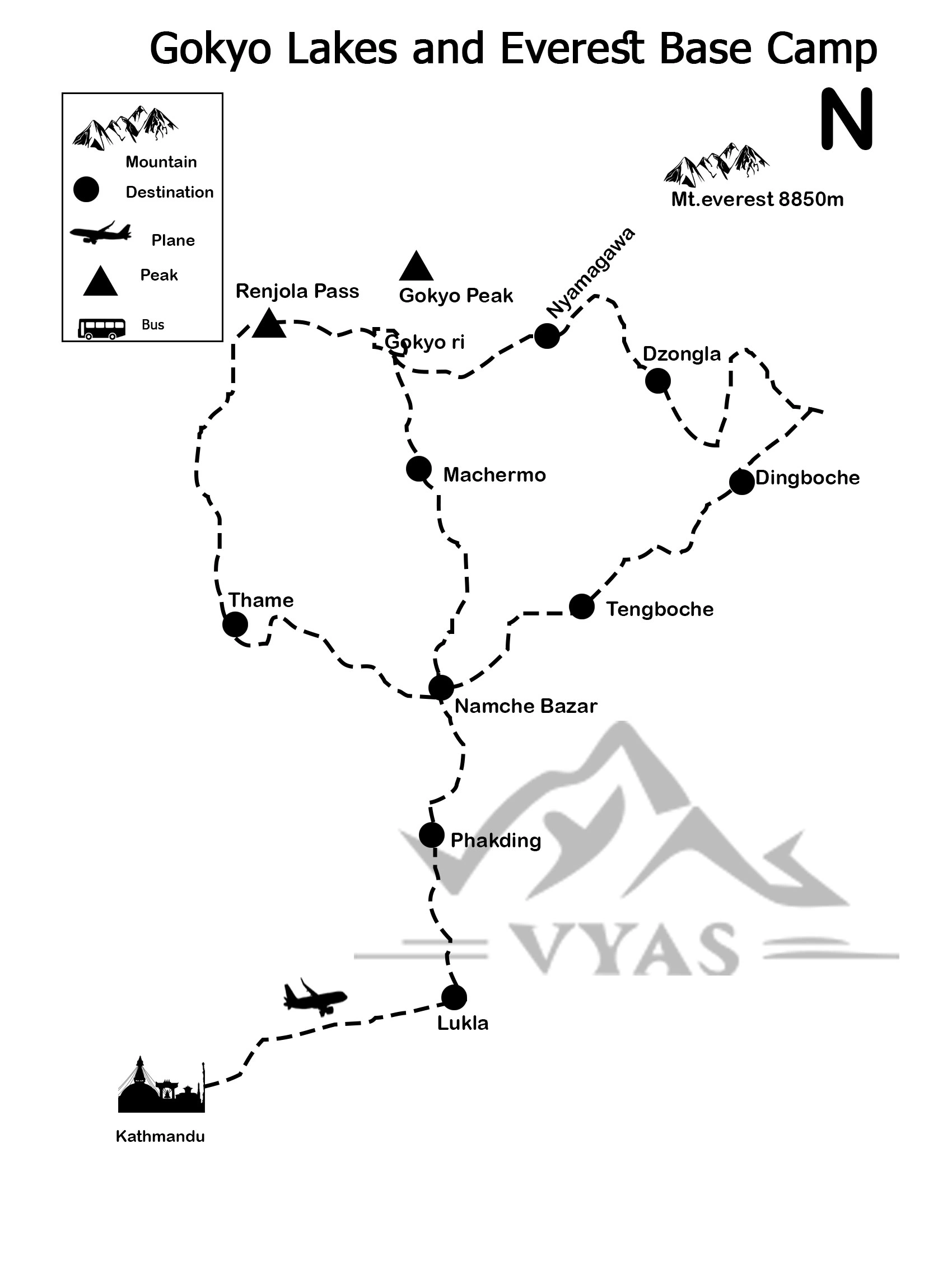






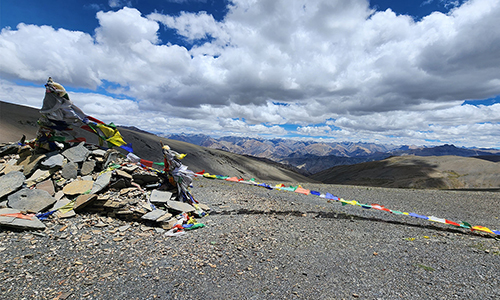

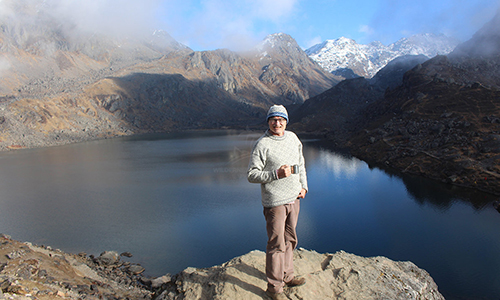


Alex Peterson
2025-06-16 15:18:15
The Ultimate Everest Adventure was exactly that — ultimate! Trekking through the stunning Gokyo Valley, crossing Cho La Pass, and reaching Everest Base Camp was the most rewarding experience of my life. Vyas Trek Nepal’s team was outstanding — professional, friendly, and always supportive. Highly recommended!